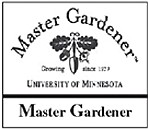June 24, 2004 at 1:24 p.m.
These are common insects that feed on many deciduous trees and shrubs, including linden, apple, birch, elm, poplar, and dogwood.
It’s hard to write about insects without a picture available. However, this caterpillar is very distinctive. It has a reddish head and a hairy yellowish body. It also has two long black tufts of hair that stick out near the head. There is a yellowish or blackish tuft at the tip of the abdomen and four cream colored squarish tufts on the top of its body that look like tooth-brush bristles. The white marked tussock caterpillars are about 1-1/4 inch long when full grown.
They spend the winter as eggs and hatch the following spring between mid to late May. The young larvae feed on the leaves and eat holes in the leaf called skeletonizing. This type of injury is when insects feed on one layer of leaf tissue between the veins, giving leaves a lacey or transparent look. As the caterpillars become older, they consume the entire leaf, except for the mid vein and other large veins. They feed for about five to six weeks. There is a second generation that hatches in August and feeds into September.
In most cases tussock moth numbers are not abundant enough to seriously defoliate woody plants. Most of the time they attack healthy well-established trees and shrubs which can easily tolerate their feeding even if it is severe. Most healthy and well-established trees and shrubs can tolerate severe feeding; even complete defoliation, for three consecutive years. Although the feeding probably will slow down growth, it won’t kill the plant.
If it is necessary to manage the white marked caterpillar, the key is to treat them when they are 5/8 inches long or less. You want to minimize plant damage not just kill insects. Spraying caterpillars not only does not reduce the number of insects you’ll see later but probably will unnecessarily kill natural enemies. Only treat caterpillars when the damage to the plant is evident.
Less toxic insecticides include azadirachtin (neem), Bacillus thuringiensis (Dysel, thuricide) and spinosad (Conserve). Other effective insecticides include acephate, carbaryl, ciffluthrin, and permethrin.
There have been reports from homeowners that some insects have been chewing on the leaves of oak trees. There is a good chance that the culprit is the June beetle. The adult stage is the white grub that attacks our lawns. They feed at night and become active in late May or early June. To be sure that it is the June beetle, check your trees when it’s dark.
June beetles are particularly fond of oaks but may also be found on other hardwood trees such as ash and willow. Healthy well-established trees can easily tolerate their feeding and they probably won’t bother next year.
Young, stressed, or unhealthy trees can be injured by severe June beetle defoliation. If this is the case, protect more vulnerable trees by spraying them as soon as the feeding is discovered, using a residual insecticide such as permethrin or cyfluthrin. June beetles typically feed through June, then lay eggs and die.
+++++
Ways to access information
www.extension.umn.edu/county/chisago Check out the ‘Hot Topics’ box in the middle of the page for current Chisago County Master Gardener news and events.
You can also click on ‘Ask a Master Gardener’ next to the cute little flower on the right hand side of the page. Here you can search 1000’s of answers from Master Gardeners around the state. If you don’t find your answer you can submit a question online or search for University publications,
Bell Museum of Natural History — For information about snakes, skunks, raccoons or other wildlife around your yard, call the wildlife information line at (612) 624-1374 or www.bellmuseum.org.



Comments:
Commenting has been disabled for this item.